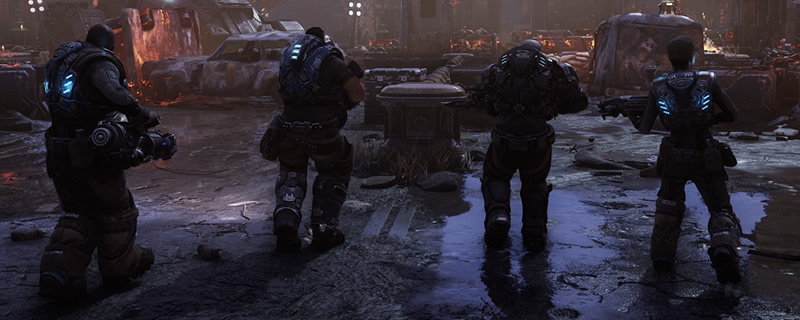Gears Tactics PC Performance Review and Optimisation Guide
Conclusion
Like Gears 5, Gears Tactics is another great PC game from Microsoft, providing PC gamers with a wide range of graphics options that allow the game to be scaled from laptops all the way to high-end gaming desktops.Â
While we are disappointed in Gears Tactic’s use of Variable Rate Shading (VRS), it is worth noting that this setting was added to the game through a collaboration with Intel, who wanted this setting to be added to the game to increase the performance of its integrated graphics solutions. With this in mind, it makes sense for VRS to be aggressively used in Gears Tactics, but this same aggressive use makes the feature all but useless when uses with high-end graphics cards like Nvidia’s RTX series. With this in mind, we would like to see a “quality” mode added to Gears Tactic’s graphics options.Â
With all of our hardware, it was easy to optimise Gears Tactic’s graphical settings to get the game to run with 60FPS. Anyone with a strong quad-core processor should be able to achieve 60 FPS framerate. Doing the same on the GPU-side can be done by using our “optimised settings”, as detailed on page 8 of this analysis, or using Gears Tactic’s dynamic resolution options.Â
When playing Gears Tactics at Ultra Settings, the game can be very demanding on both old and new graphics hardware. The Coalition and Splash Damage have done a great job getting the game to run well at lower settings and giving PC gamers plenty of ways to increase their gaming performance.Â
As far as PC games are concerned, Gears Tactics sits as one of the best when it comes to graphical options. There is an abundance of settings, these settings are explained well, and every graphics setting as a selection of images which are used to showcase what visual impact they will have on Gears Tactics. The game’s included benchmark is also very similar to what players will experience in-game, even if the benchmark exhibits a lot of run-to-run performance variance. The only thing that we would like to see improves in a decrease in benchmark performance variance, which could be achieved by defining the movements of Gears at the start of each benchmark run. Settings-wise, lowering settings like Ambient Occlusion and Screen Space reflections down to high will deliver notable performance boosts without any noticeable reductions in graphics quality. In addition to this, lowering settings for Volumetric Lighting and Planar reflections will provide considerable performance boosts while having a minimal impact on the game’s visuals in most areas.Â
Aside from the optimisation tips that we detail in the other pages of this review, we will note that users of 6GB, 4GB or graphics cards with smaller frame buffers may have issues when playing Gears Tactics with high texture settings or texture streaming settings. Lowering Texture streaming settings will help if you are memory bandwidth limited, and reducing texture detail settings will help of your are limited by the side of your graphics card’s frame buffer. Thankfully, the developers of Gears Tactics has given players plenty of options to address these potential shortcomings.
With Gears Tactics being available from day-1 on Xbox Game Pass, every strategy fan has no excuse not to give this game a try. The game runs well across a wide range of hardware, plays well and is almost too inexpensive to avoid for financial reasons. Newcomers to Xbox Game Pass for PC can still get a month’s access to the service for as little as £1, and for that, you get access to Gears Tactics and a considerable number of other great PC titles.Â
You can join the discussion on Gears Tactic’s PC Performance and Settings Optimisation on the OC3D Forums.Â



